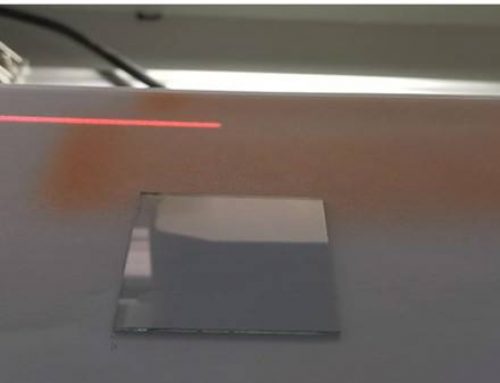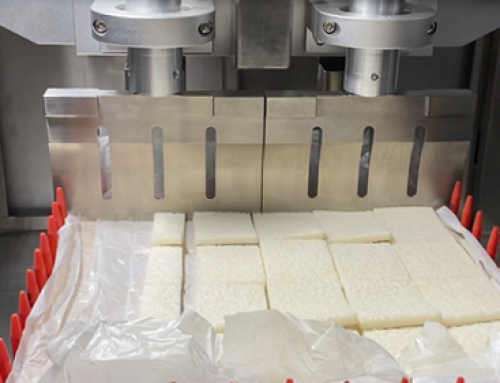Ultrasonic spraying of vascular stent surface coating
With the widespread use of vascular stents in interventional medicine, the preparation of functionalized coatings is increasingly diverse. Among many methods, ultrasonic spraying technology plays an increasingly important role as an emerging technology. Systematic research is helpful to guide the development of vascular stent coating preparation process, increase process reliability, and optimize coating quality. And reduce research and development costs.
This paper focuses on the high-precision ultrasonic coating system for the surface treatment of micro-devices, and combines the ultrasonic spraying technology with the coating preparation of the vascular stent to guide the process development and optimize the coating quality. The article is based on physical mathematical modeling, fluid mechanics simulation, experimental detection and analysis, process development and application of the route, and finally successfully developed a drug sustained-release stent (DES), including the following aspects:
Firstly, the working principle of ultrasonic atomizing nozzle is studied, including the internal wave equation of the nozzle and the amplitude amplification ratio. On this basis, the ultrasonic atomization physical model is established, the ultrasonic spray particle size equation is derived, and key parameters such as power and viscosity are studied. The influence of surface tension and the like on the atomization particle size. The theoretical results show that during the ultrasonic atomization process, the increase of gas pressure and ultrasonic frequency leads to a decrease in atomization particle size, and the increase of liquid surface tension leads to an increase in atomization particle size; while the influence of power and viscosity on particle size is negligible.
Secondly, based on the established ultrasonic atomization model, computational fluid dynamics (CFD) is used to simulate the ultrasonic atomization process and the spray motion process under the action of gas phase. On the one hand, the variation law of atomized particle size with various parameters is studied to make up for the established mathematical model; on the other hand, the motion law of spray particle group and the variation law of spray morphology are studied. The results verify the influence of ultrasonic frequency and surface tension on atomization particle size, and summarize and define three atomization modes of ultrasonic atomization process: sub-atomization mode, ideal atomization mode and jet atomization mode. In addition, the results of CFD simulation on spray motion show that the spray particles decrease slowly during the movement, there is no secondary crushing, and some collisions merge. The statistics show that the collision probability is inversely proportional to the gas pressure and the proportion of the total. Smaller. In addition, the spray particle concentration of the spray section is normally distributed, and the axial displacement of the stent must be properly controlled during the actual spraying to eliminate the influence of the cross-section distribution on the coating.
Next, the ultrasonic spray particle size detection experiment was designed for the Medi-coat spray system to study the influence of process parameters such as power and gas pressure on the spray particle size and verify the rationality of the spray particle size equation. The results show the influence of power, flow and gas pressure. In the ultrasonic atomization mode, when the power is reduced and the flow rate is increased, the spray particle size is increased; and when the gas phase pressure and the spray cross section are changed, the spray particle size changes little, which means that the ultrasonic spray is stable under the action of the gas phase; In terms of diameter distribution, when the flow rate increases, the spray particle size distribution becomes narrower. In addition, the ultrasonic spray particles do not undergo secondary crushing under the action of the gas phase. At the near nozzle position, the particles tend to merge, but the proportion is small. Finally, using the Rosin-Rammler distribution to fit the ultrasonic spray particle size uniformity index between 7.11 and 11.48, which is superior to the spray quality obtained by conventional spraying technology, and the spray controllability, operational flexibility and energy saving are greatly improved.
Finally, based on the ultrasonic atomization spray model and experimental research results, the ultrasonic spray coating parameter model of the vascular stent surface coating was established. The formation of various morphologies was obtained by analyzing the process parameters affecting the surface quality of the stent coating. Mechanism and effects of various process parameters on coating preparation. On this basis, an orthogonal experimental scheme using tetrahydrofuran as solvent and 30% PEO-PSF as coating material was developed. The process parameters were optimized, and the parameters such as flow rate, pressure and rotation speed were the main factors affecting coating quality. Factors, and according to the optimized process parameter set, the experimental verification of the stent coating preparation eliminates the common thick edge, bridging, bump and other defects; AFM test results show that the surface roughness is optimized before 2μm × 2μm 6.35nm dropped to 1.72nm, the coating quality was significantly improved; in addition, the incremental test results showed that the quality deviation of the same coating was 10μg, and the optimized process had good reliability and stability. Finally, based on the known parameter influence law and optimized parameters, the stable and reliable spraying process for drug sustained-release stent (DES) was successfully developed, and the technical basis for the industrial production of drug sustained-release vascular stent was established.

Ultrasonic spraying of vascular stent surface coating video
Recommended Equipment
Ultrasonic Atomization Nozzle
Laboratory Ultrasonic Coating System
UAM3000 Ultrasonic Medical Devices Spraying
UAM4000 Desktop Ultrasonic Spraying Equipment
UAM6000 Ultrasonic Spraying Machine
UAL100 Ultrasonic Dispersion Syringe Pump
LULP500 Ultrasonic Laboratory Device
Prosonic1000 Industrial Ultrasonic Device
Prosonic3000 Most Powerful Ultrasonic Processor






